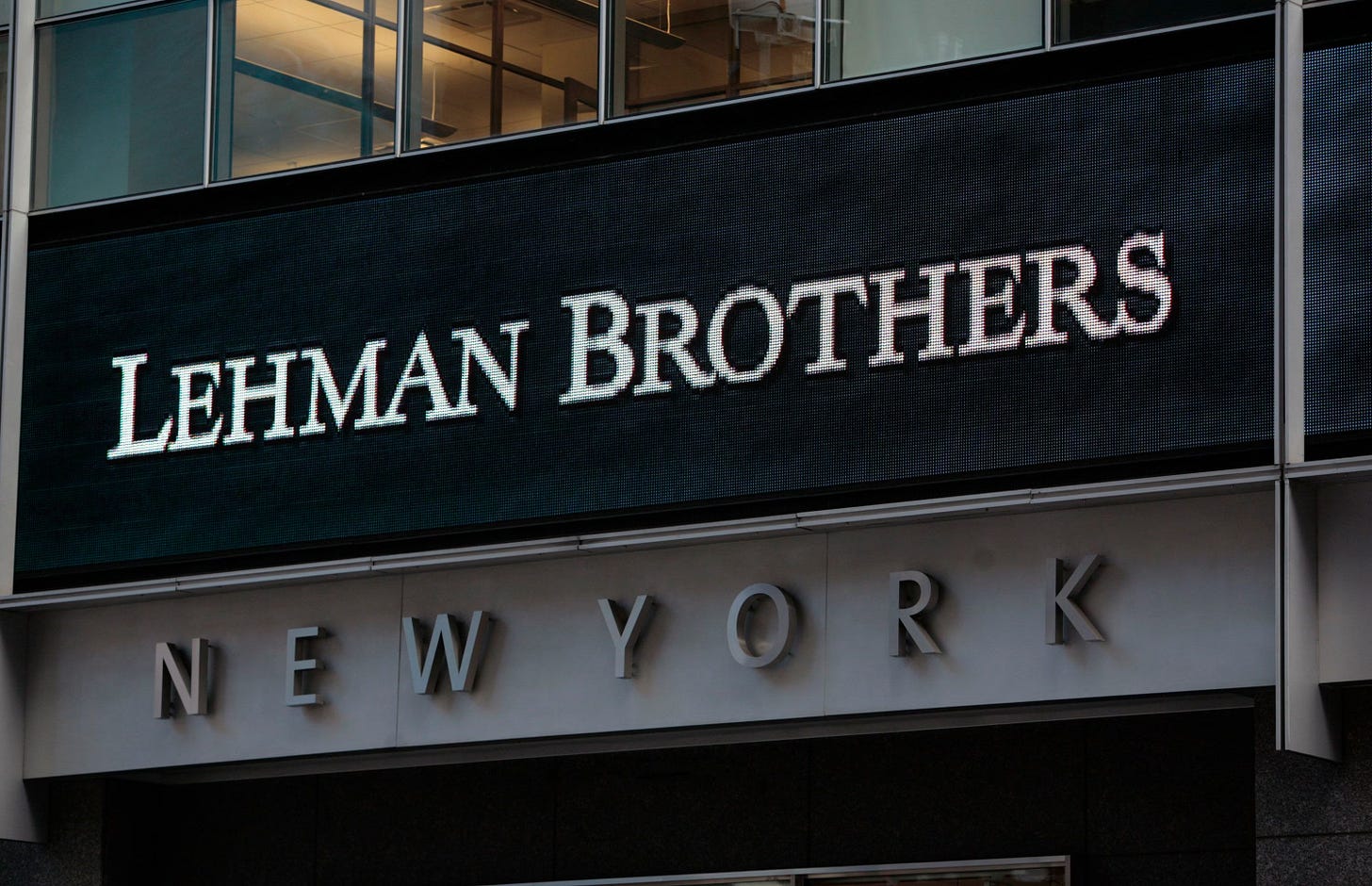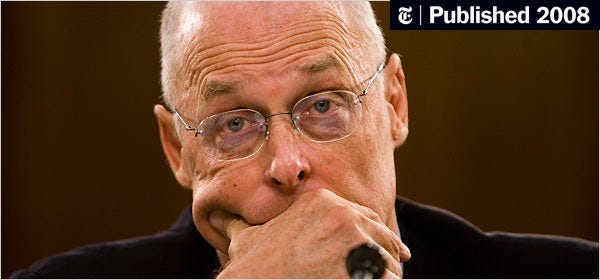Flash Point: Gray Areas - Part 2
Gray Area: An indeterminate territory, undefined position, neither here nor there.
In Flash Point: Price Drives Sentiment, I explained that I believe being a student of history is a necessity for anyone that hopes to become a better investor or trader. Being a student of history is not only limited to textbook-worthy events, it is an ongoing process.
I’m not saying that in a way that is holier-than-thou, I live out and refine my own process every day. By trying to better understand market dynamics and historical events, I am better equipped as a market participant.
One of the primary reasons I pursued a career in finance was due to my fascination with the Great Financial Crisis (GFC). I was ~11 years old when the crisis began to unravel, so I was old enough to know something was going on, but not able to comprehend what that something was.
Since then, I have spent countless hours studying what happened during the GFC for no other reason than my own enjoyment and intellectual curiosity. As I dove deeper, I realized that what I was learning would be invaluable in my career, if applied correctly. My curiosity led me to a place where not only was I learning about the GFC, but I was also beginning to understand market dynamics and human psychology, both of which I believe are not studied enough by investors.
The Great Financial Crisis was a generational event, one where whenever I thought I figured out what happened (for the most part), something else completely new came up and a new thread could be pulled.
If the idea that one thread would lead to many more was the bait, the opportunity to compete with the smartest people and fastest computers in the world was the hook.
So, why am I saying all of this? Well, it’s easy to pull details from historic financial events and find ways to mold them to current circumstances, but doing so can quickly create false narratives. These false narratives can create biases that we, as investors, don’t even realize are coming into play in our investing decisions.
The reasons we miss these biases is due more to our nature than anything else. As humans, we want things to be black-and-white, but almost everything is inherently in-between. This is what we call, The Gray Area.
Gray Area: An indeterminate territory, undefined position, neither here nor there.
One of my favorite examples of a gray area - one that I think about often - I learned about completely inadvertently. While I was researching what I was going to write my senior thesis about, I came across an article about the GFC and the lack of cash available to US citizens in ATMs. The article piqued my interest because I remembered hearing about this, but thought it was debunked. I quickly learned that not only was the story true, but my belief that there was no shortage of cash was/is the common thought.
In turn, the subject of my thesis was decided: How Mexican Drug Cartels Bailed out the United States Government.
From what is known, the structure of the deal was simple: The IMF acted as the mercenaries, while the US Government bought what the cartels were selling.
Using the IMF to facilitate the deal was easy - no congressional action was needed as it fell under the Fed’s purview. So what did the cartels get in return for the cash they quietly handed over to the US Government? Well, that was never disclosed outside of the cartels’ new found, clean investment portfolio.
If you’ve never heard about this deal, you’re not alone. In fact, you’re in the majority, so let’s take a step back.
In June 2007, there were rumors that US bank ATMs would run out of money. That was then followed by the famous meeting of the world’s largest banks with Treasury Secretary, Hank Paulson, where Paulson required all of the banks to take a cash infusion to mitigate the market’s ability to sniff out which banks were insolvent.
Taken at face value, the deal was black-and-white, it all made sense as it related to logical thinking, but where that cash came from was the unknown gray area.
If if was not for the Mexican drug cartels infusing $352 billion into the US financial system, who knows which banks would have stayed afloat or which ATMs would run empty.
Don’t take my word for it, here’s Antonio Maria Costa, Head of the UN Office on Drugs and Crime, saying it:
“In many instances, the money from drugs was the only liquid investment capital. In the second half of 2008, liquidity was the banking system's main problem and hence liquid capital became an important factor…Inter-bank loans were funded by money that originated from the drugs trade and other illegal activities... There were signs that some banks were rescued that way.” - Antonio Maria Costa, Head of the UN Office on Drugs and Crime
The ATM ‘rumor’ and cash infusion happened the same exact week Timothy Geithner, then President of the New York Fed, gave a speech before the Forum on Global Leadership in Washington, where he declared financial markets are, “…now deeper and more liquid than they used to be.” I don’t think I need to tell you this, but he lied - all of the politicians, talking heads and economists lied or were unaware of what was happening under their noses. Behind closed doors, the Fed knew what was going on and yet, they said nothing to the public. Instead, the Mexican cartels were able to go on a $352 billion buying spree, all of which became legal tender and avoided the need for being laundered.
Yes, you read that correctly. The United States government was bailed out by the largest drug cartels in the world, yet no one, not even a banker, went to prison.
I tell you this story not from a negative standpoint, but one where I hope to express the importance of checking one’s biases, understanding that black-and-white scenarios and outcomes are rare.
Imagine if the US government did not follow the steps that they did during the GFC - what would our markets look like then and now? Moral arguments can be made from both sides and although it is hard to say, I believe what they did was the right decision.
I wanted to publish this piece before I provided you with my article about some stocks I look at as economic harbingers. These stocks are not the commonly used stocks you hear about on CNBC or Bloomberg. Ones like CAT, which many look to as a proxy for the level of activity in construction or TOL, PHM, or KBH which people use to see activity in the homebuilders.
The stocks I am going to publish are more off the beaten path, but they are all important in my research process. Some are ignored due to investors’ morals, while others have less obvious relations to the economy and market as a whole. Every stock I include has their own function in my process, which I will provide you with when the post comes out later this week.
As for the time being, remember that we do not live in a world that offers many black-and-white opportunities, especially as it relates to investing. With that in mind, focus on investment opportunities where you understand the expansive landscape a stock/company resides in. The more you understand about the landscape, the better off you’ll be at wielding the historical knowledge you have gained to make the best decisions you can.




